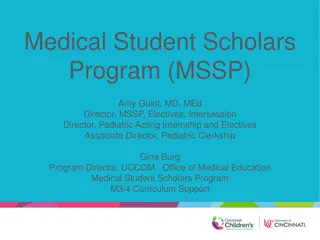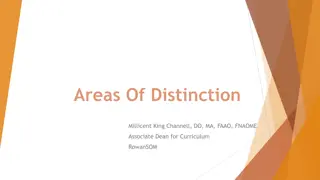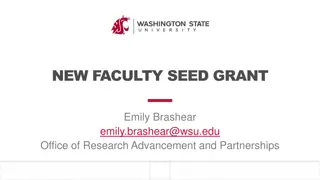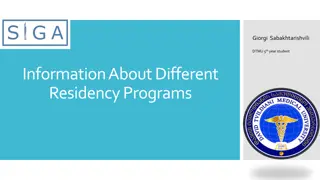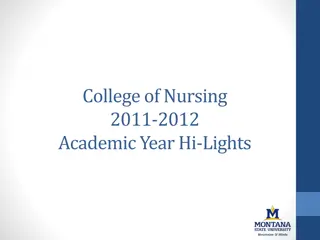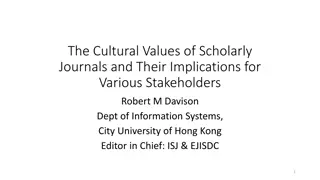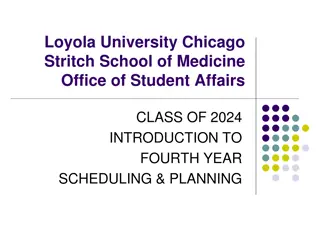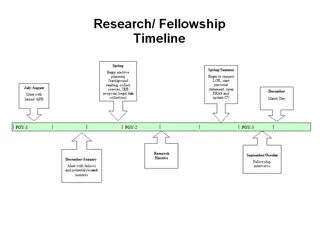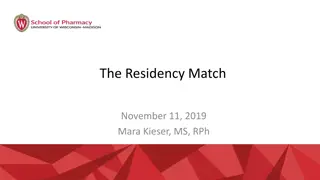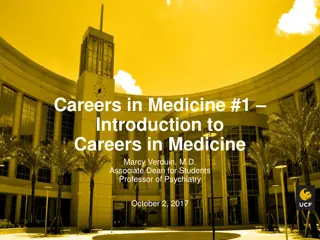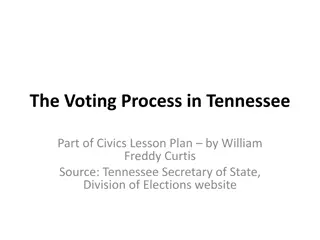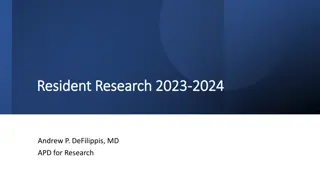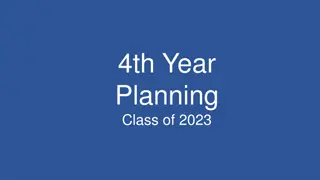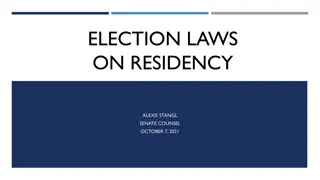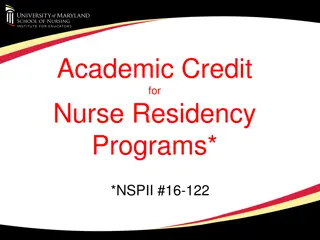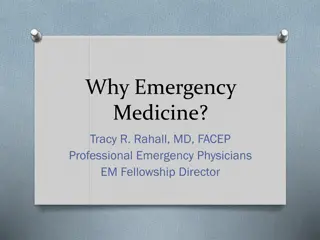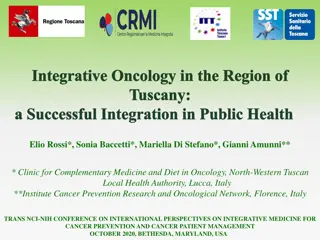Enhancing Engagement in Scholarly Activities and Research in Family Medicine Residency Programs
Explore strategies and challenges in promoting scholarly activities and research participation among residents and faculty in family medicine residency programs. Learn about ACGME/RRC requirements, importance of research in primary care, and creative QI and scholarship curricula. Discover insights on engaging residents in scholarly activities to enhance evidence-based clinical care in family medicine.
Download Presentation

Please find below an Image/Link to download the presentation.
The content on the website is provided AS IS for your information and personal use only. It may not be sold, licensed, or shared on other websites without obtaining consent from the author. Download presentation by click this link. If you encounter any issues during the download, it is possible that the publisher has removed the file from their server.
E N D
Presentation Transcript
Tips for Engaging and Exciting Residents (and faculty) in Scholarship and Research, Part 2: Creative QI & Scholarship Activity Curricula Ryan Gilles, MD, Kootenai Clinic Family Medicine Residency of Coeur d Alene Elizabeth Paddock, MD, Family Medicine Residency of Western Montana MorhafAl Achkar, MD, PhD, University of Washington Family Medicine Residency
POLL Does your program have a formal scholarly activity curriculum? Achieving scholarly activity requirements for residents in my program is Do residents in your program participate in research projects? What is the most significant challenge your program faces in engaging residents in scholarly activity?
ACGME/RRC REQUIREMENTS Residents 2 scholarly works during residency At least one must be a quality improvement project Faculty new ACGME wording At least 3 of the following: Research, peer reviewed grants; QI and/or patient safety initiatives; Systematic reviews, meta-analysis, review articles; chapters in medical text books or case reports; creation of curricula, evaluation tools, didactic educational activities, or electronic educational materials; contribution to professional committees, educational organizations, or editorial boards; innovations in education Dissemination For program as a whole, over a 5 year interval Faculty participation in grand rounds, posters, workshops, QI presentations, podium presentations, grant leadership, non- peer-reviewed print/electronic resources, articles, or publications, book chapters, text books, webinars, service on professional committees, serving as a journal reviewer, journal editorial board member, or editor, peer-reviewed publication No update from FM RRC still states 2 per faculty on average over 5 years
THE IMPORTANCE OF RESEARCH IN FAMILY MEDICINE Research in primary care is essential because clinical care must be based on research evidence, and the evidence base for the majority of care for the population cannot be generated only through animal studies or laboratory or hospital-based research. Despite the size and importance of primary care in delivering health care, the research output has been relatively limited. Carek P, Mainous A. The State of Resident Research in Family Medicine: Small but Growing. Ann Fam Med 2008;6(suppl 1):s2-s4.
COMMON CHALLENGES FROM WPRN PRE-CONFERENCE TIME MONEY Interest and enthusiasm Follow through Siloes Linking residents and faculty for projects IRB Meeting minimums only Tracking projects When to say no This Photo by Unknown Author is licensed under CC BY- SA-NC
BARRIERS TO RESEARCH IN RESIDENCY 1. Lack of Resident Interest 2. Resident Time The majority of family medicine residencies did not receive grant funding for research and reported that time and money were the most significant barriers to research. 3. Lack of Mentors 4. Faculty Time 5. Lack of Research Curriculum 6. Lack of Funding 7. Inadequate Research Skills among Residents Young R, et al. Research Funding and Mentoring in Family Medicine Residencies. Fam Med 2007;39(6):410-8. Rothberg MB. Overcoming the obstacles to research during residency: what does it take?. JAMA 2012; 308 (21):2191-2192.
Possible solutions from the literature: Keys to Successful Research in Family Medicine Residency Education 1) Program director support 2) Time for faculty and residents 3) Faculty involvement in research 4) A research curriculum/journal club 5) An easily accessible research professional 6) Opportunities for residents to present their research 7) A research/scholarly activity committee 1) DeHaven M, Wilson G, O Connor-Kettlestrings P. Creating a researchculture: what we can learn from residencies that are successful inresearch. Fam Med 1998;30:501-507. 2) Winter R. Leading Successful Residency Research. Ann Fam Med 2003; 1: 183.
CASE STUDY #1 FMRWM (ELIZABETH) Overview of QI at the FMRWM 6 didactic sessions spread out over the academic year. 3 faculty involved in oversight. At each session we briefly cover a QI topic/skill, then allow time for residents to work on QI projects. R1: Individual behavior/workflow/wellness theme. May join up with an R2/R3 group if strong interest in a particular project. R2: A clinical project that ideally will meet the ABFM Performance Improvement requirement R3: A QI project of their choosing R2/R3s may work in groups of 2 or 3. Spring Scholarly Activity Showcase Scholarly Activity and QI Work annual publication.
QI AT FMRWM- GOALS OF THE QI CURRICULUM Our aim is not necessarily success but rather exposure to the QI process. Residents choose their topics. Huge variability in what is addressed. We do not want this to feel like extra work. Because of limited time we aim to make these really tiny projects. Majority of our teaching is spent on SMART aim statements. Some on measures. 1:1 guidance and suggestions on projects available during protected QI time. We have tried to partner with QI interests/growth areas at Partnership Health Center (PHC) our clinical training site.
FMWRM DETAILS OF THE ANNUAL PUBLICATION OF QI AND SCHOLARLY ACTIVITY WORK. Final product: For R1/R2/R3 QI Write up using QI abstract template In addition R3s also provide a write up of scholarly activity work completed over the past 3 years.
QI WRITE UP TEMPLATE Project Title Problem Aim statement Key measures for improvement Data gathering process Analysis and Interpretation Strategies for change Effects of change Lessons learned
SCHOLARLY ACTIVITY WORK SUMMARY SUMMARY Title of project Details of the project Outcome Reflections on the project. SCHOLARLY ACTIVITY SHOWCASE R3s take ~7-10 minutes to present on their QI and SA work and answer questions. All residents, core faculty, PHC providers, PHC leadership and QI team, and community preceptors are invited to attend.
2018-2019 R2/R3 QI PROJECTS Using a huddle check list for improved clinic team efficiency. Naloxone prescribing practices for patients at risk of overdose Medicare Wellness Exam (PHC area of focus) BMI Counseling Developmental Screening in WCCs (PHC area of focus) Nursing triage protocols Improved Contraception Access Optimize OMT in-house referrals (PHC area of focus) Lab workflow (PHC QI project) Improving continuity of care Improving Hep C screening for 1945-1965 cohort (Kalispell project) Improving ASQ screening (Kalispell project)
CHALLENGES 2018-2019: Time period was 6 months. This year have expanded curriculum out 9 months (still just 6 sessions) to allow more time for data collection. It takes about 3 sessions to finalize the aim statement. . R1 wellness theme: some pushback from a few R1s that we were taking one thing that brought them joy and making it work . R2s and ABFM QI requirements. Currently encouraging use of the Performance Improvement clinical pathway write up. Have not yet pursued Respip approval Partnering with PHC objectives. Confusion over QI vs Scholarly Activity requirements. Not a comprehensive QI curriculum. Prioritizing what skills to teach and tools to use?
SUCCESSES Resident buy-in Some really valuable contributions Several residents building on projects from the prior year (PDSA cycle #2) Sharing of the great work residents are doing with our community. Tiny projects model probably more realistic for most in the future after graduation.
CASE STUDY #2 UWFMR (MORHAF) Residency Expectations Learning how to evaluate and apply research Complete HDA Core skill I&2 Master critical appraisal Journal clubs Complete a scholarly (non-QI) project Scholarly blocks R1 3-4 weeks R2 6 elective weeks; R3 12 elective weeks; time during R3 curriculum? Complete a quality improvement (QI) project R3 curriculum
INTERNS SCHOLARLY WEEKS Intro to scholarly work (Scholarly work I) Early to mid year for R1 Objectives Explore scholarship opportunities in residency Reflect on residents previous experiences in scholarship Conceptualizing individual scholarship projects Identifying possible mentors Share ongoing projects 1-2 months prior, faculty champion seeks research faculty input on ongoing projects that could include residents Invite researchers to talk to residents (30 min zoom conversations) Develop repository of projects
INTERNS SCHOLARLY WEEKS Second block (Scholarly Work II) Second half of intern year Objectives Check in on progress with scholarly work Problem solve Have time to work on projects including HDA
CHECK IN CCC and advisor meetings (Q6 months) Scholarly week block II (around Core skill III) 2 hours session to check in Troubleshoot problems Give advice Medical home month (R2) 2 hours session to check in Department fair Submit WIP poster by second year? WIP Wednesday 3rd Wednesday R2&3 to present their work R3 Curriculum Provide time to work on scholarly projects and QI 2 hours to check in when all residents are around
A PIPELINE FOR COLLABORATIVE PROJECTSWITH RESEARCHERS Annual solicitation of projects around interns scholarly block Longitudinal conversations on the third Wednesday As they come projects Collaborative funded projects
ANNUAL SOLICITATION OF PROJECTS 1-2 month prior to interns scholarly blocks Brief Project Description Possible Resident Role Time commitment needed Links to Further Reading Available time for first meeting Consider revising sheet with researchers Share 5-6 projects with interns Schedule few 30 minutes conversations during scholarly blocks
LONGITUDINAL CONVERSATIONS ON THE THIRD WEDNESDAY LED BY RESEARCHERS Objectives of presentations are threefold Teach a method of research Showcase a project Invite residents and residency faculty to join Dates and lists of presenters will be developed in collaboration with research section July: intro to research, scholarship, or writing August-June: researcher presentations
AS THEY COME PROJECTS WPRN projects Champion to share with faculty in next faculty meeting as announcement Champion to share with residents in next Wednesday as 5 minutes announcement Email goes out to both group
LEARNING CRITICAL APPRAISAL (EBM) Either Online modules (Preferred) YouTube videos on critical appraisal (4) 4 articles and 4 working sheets Scholarly work II Expectations are to complete 2 Or 1-2 sessions during 3rd Wednesday Therapy (RCT) Diagnosis Prognosis Etiology Or combination of both Practicing by running journal club (JC) Develop a structure for leading JC discussions Validity, importance of results, applicability















